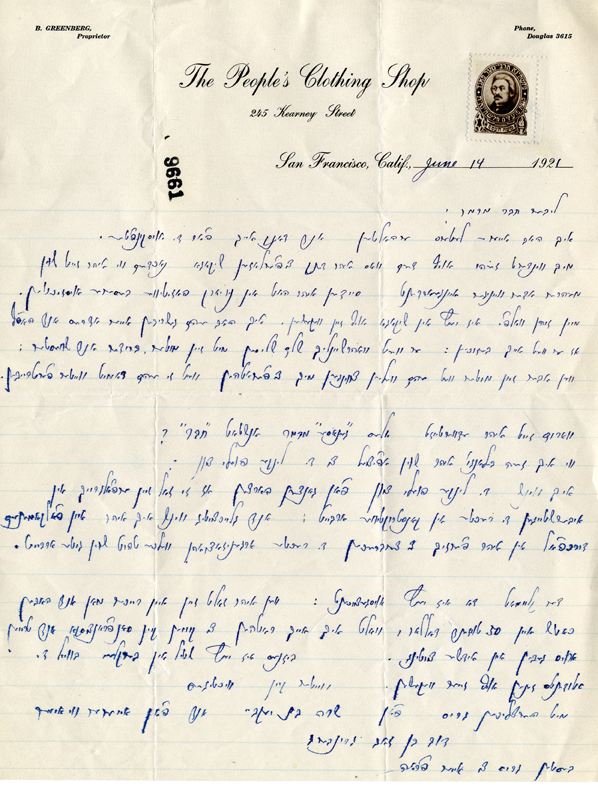Di gantse velt af a firmeblank: The World of Jewish Letterheads
Assemble the letterheads of Jewish organizations, institutions, and individuals in Europe, North and South America, and Palestine from the 1890s to the eve of World War II in 1939 and you have a portrait of the Jewish world: transnational; diverse in language, political, and religious orientation; and flourishing.
Di gantse velt af a firmeblank (The Whole World on a Letterhead) is an experiment in building that portrait. Here, we hope to bring you several times a month, a different example of letterhead from a single collection in the YIVO Archives, the Papers of Kalman Marmor.
Marmor, a Yiddish writer and cultural activist, was born October 11, 1879 in Mayshigola, Vilna Gubernia (today Maišiagala, Lithuania). In 1906, he settled in the U.S. Initially active with the Labor Zionist movement, he later became a Communist. He was an organizer of the 1937 World Yiddish Culture Congress, cultural director of the International Workers Order, and a contributor to the Communist Yiddish newspaper, Morgn Frayhayt. Between 1933 and 1936, he lived in Kiev, where he worked at the Institute of Jewish Proletarian Culture and prepared scholarly editions of the work of American Yiddish poets and writers. During Stalin’s Great Terror, the Institute was liquidated, and much of its leadership was arrested and executed. Marmor, an American citizen, returned to the U.S. He died in Los Angeles in 1956.
His papers at YIVO contain several thousand letters from the turn of the 20th century to the 1950s. He had an astonishingly diverse array of correspondents, not limited to Zionist and Communist activists.

From B. Greenberg (Dovid ben Zev Greenberg) in San Francisco to Kalman Marmor in New York, June 14, 1921. (RG 205, Folder 118)
Dovid Greenberg seems to have been the proprietor of the People’s Clothing Shop in San Francisco. He was also a labor Zionist. Here he has personalized (and politicized) his professional letterhead with a stamp for the Palestine Workers Fund featuring a portrait of Moses Hess, the ideological father of labor Zionism.
He writes to Marmor just as the latter is contemplating leaving Chicago because of growing tensions between himself and his employer, the Forverts, over his move further left politically, from Zionist socialism to Communism. Greenberg expresses surprise that Marmor would leave Chicago, “where you are more or less settled,” for New York, unless Marmor is absolutely sure he has better prospects there. But if Marmor had at least $30,000, he notes, the time is ripe for establishing a Yiddish newspaper in San Francisco.
Greenberg sardonically notes that Marmor is now calling himself genose (comrade) instead of khaver (also comrade, and the preferred term in socialist Zionist movements): "I see you are now officially a member of Poale Zion Left." (The party had recently split into two factions: one, the “Left” was pro-Soviet; the “Right” was in the democratic socialist camp.) Greenberg hopes that Poale Zion Left will outdo Poale Zion Right in "constructive work" (that is, settlement in Palestine) but that it will "utterly fail" in breaking Poale Zion Right because the latter "already does good work."
In other news, Greenberg mentions that his son Wolf is in Chicago visiting his mother (from whom Greenberg senior is apparently estranged or divorced) and that he will give him Marmor’s address. Business is slow in San Francisco, he concludes his letter, because “the students are on vacation.” (This is a revised version of a piece originally posted on May 22, 2015. Thanks to Daniel Soyer for corrections to the Yiddish translation.)
Series curated by Roberta Newman; Images digitized by Vital Zajka. Biographical information on Kalman Marmor from biographical note by Daniel Soyer in the inventory to RG 205, Papers of Kalman Marmor.